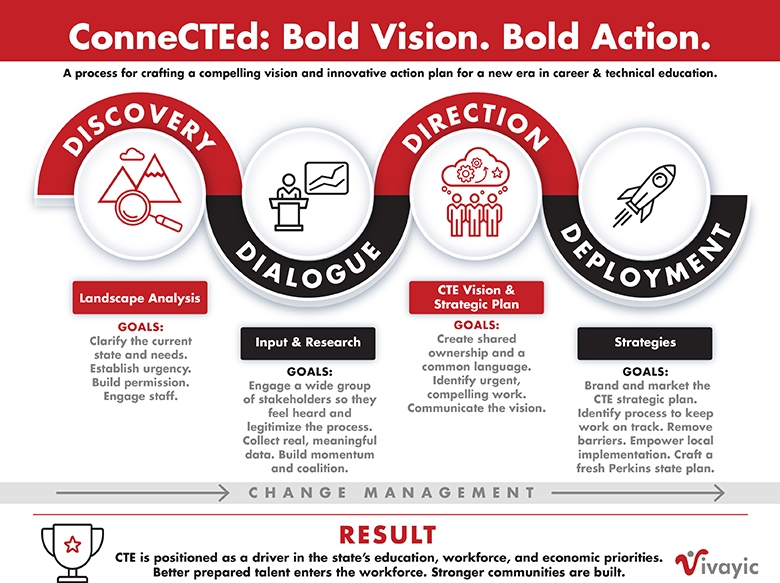States Should Establish Their Vision for Career Technical Education now in Preparation for Perkins Reauthorization


We’d like to share some perspective of the importance of engaging stakeholders in a process to develop a statewide vision for CTE.
CTE is being looked to as a major contributor to states’ workforce development solutions. And, because of this, state-level officials and their teams are being invited and challenged to support efforts beyond what was typically expected in the past. State leaders in CTE are being asked to position CTE programs to meet their state’s education, workforce, and economic development priorities.
Furthermore, state CTE leaders are expected to engage with industry organizations and businesses to stay connected with the real demands and needed skills in today’s marketplace. These leaders must use these connections to help shift the perceptions around skilled professions so that local programming reflects today’s working environments and career opportunities.
 To be effective, state CTE leaders need to convene these key stakeholders and drive a discussion that reveals their needs and priorities. Then, these leaders need to purposefully work to create a shared vision that engages, excites, and empowers stakeholders while maximizing available CTE funding and policy levers to affect meaningful outcomes.
To be effective, state CTE leaders need to convene these key stakeholders and drive a discussion that reveals their needs and priorities. Then, these leaders need to purposefully work to create a shared vision that engages, excites, and empowers stakeholders while maximizing available CTE funding and policy levers to affect meaningful outcomes.
If you wait until guidance for the new state plan is released, you won’t have time to conduct this process in any meaningful way.
In short, you need the vision first so that the critical needs, broad principles, and bold, innovative ideas are identified and agreed upon.
Your state Perkins plan, then, becomes a plan to leverage federal investment in CTE to carry out part of the vision. And, if the vision is inclusive and engaging, it may also influence the priorities and funding of workforce development, economic development, and other groups in your state so that resources can be leveraged to have a multiplier effect.
In addition to these short-term outcomes, we have a deeper purpose in promoting the statewide visions: greater impact on young people and communities. The long-term benefit of engaging stakeholders in developing a meaningful vision for CTE is that more young people will acquire foundational skills valued in the marketplace. More students will recognize that they can pursue in-demand careers that are personally satisfying as they step away from high school, new professionals in the workforce will be better prepared for the technical and social requirements of their employers, and learners of all ages will look for opportunities to continuously advance their learning and abilities to adapt as technology evolves.
Perkins may be reauthorized soon which means new guidance for state plans will follow thereafter. The next few months are a prime opportunity for states to begin the discussions with stakeholders around what could be and should be in your state.
We hope the blueprint we’ve developed is a useful tool. If you’d like to discuss further, please don’t hesitate to contact me.
